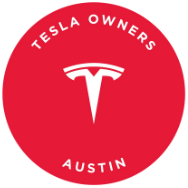California’s electric vehicle owners have been enjoying a significant perk for quite some time now. With a qualifying clean-air vehicle, including hydrogen cars, owners get access to the state’s carpool lanes on interstates, even if they are driving alone. However, this perk may come to an end with the expiration of a federal law in September.
The federal law that allows states to grant access to certain single-occupant vehicles in carpool lanes is set to expire soon. California has been taking advantage of this law to offer unrestricted access to clean-air vehicles. However, with little support in Washington for extending this law, the future of solo drivers in carpool lanes remains uncertain.
While this may seem like a setback for the EV industry, it could actually be a positive development. The original purpose of carpool lanes was to encourage carpooling as an effective way to reduce carbon emissions. By limiting access to these lanes to only carpoolers, the lanes can serve their intended purpose better.
California’s traffic issues are a significant concern, causing wasted time, inefficiencies, and increased emissions. While driving EVs can help reduce these burdens, the ultimate solution lies in reducing the number of vehicles on the road. Carpooling is a cost-effective and accessible way to achieve this goal, far more than relying solely on EV adoption.
With the EV market in California already well-established and supported by various incentives, the need for unrestricted access to carpool lanes for single-occupant clean-air vehicles is diminishing. Instead, prioritizing carpooling and incentivizing shared rides can have a more significant impact on reducing traffic congestion and emissions.
The debate over the future of carpool lanes raises questions about the effectiveness of these lanes in promoting sustainable transportation practices. While removing access for solo drivers in EVs may not solve all congestion issues, it can encourage better commuting behavior and prioritize carpooling as a viable solution.
In conclusion, the expiration of the federal law allowing single-occupant clean-air vehicles in carpool lanes presents an opportunity to refocus on the original purpose of these lanes. By encouraging carpooling and shared rides, California can address traffic congestion and emissions more effectively. It’s time to prioritize sustainable transportation practices over individual perks in order to create a more efficient and environmentally friendly transportation system.

